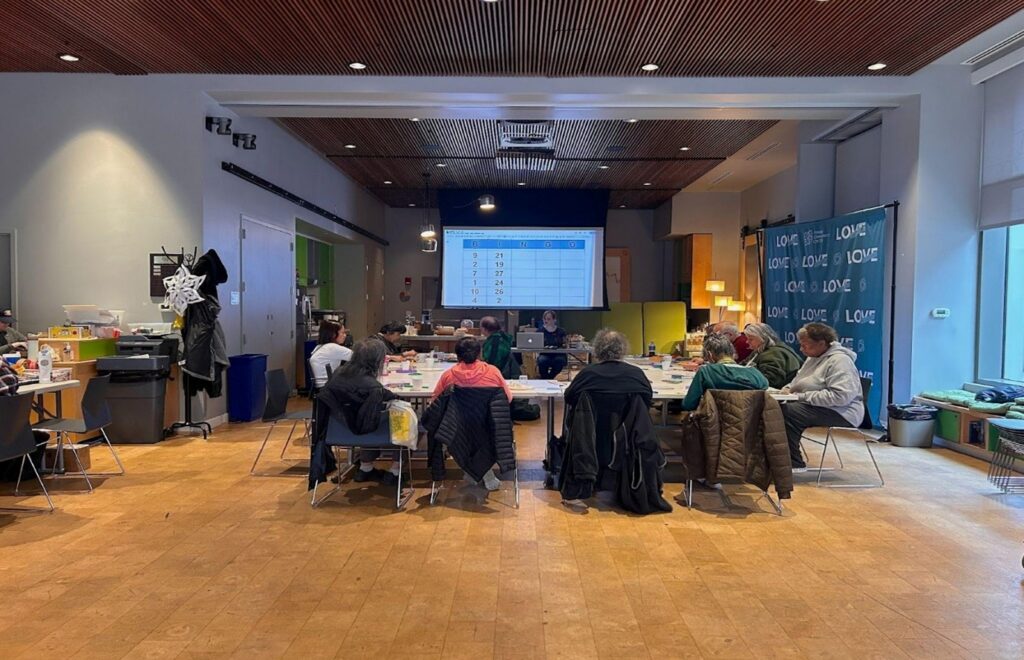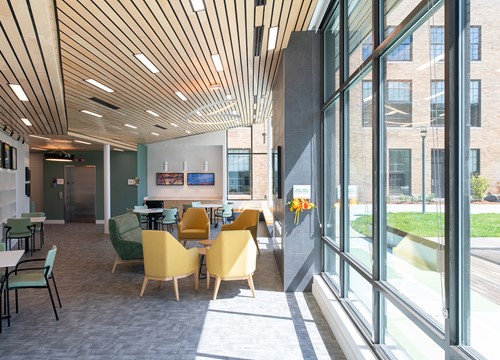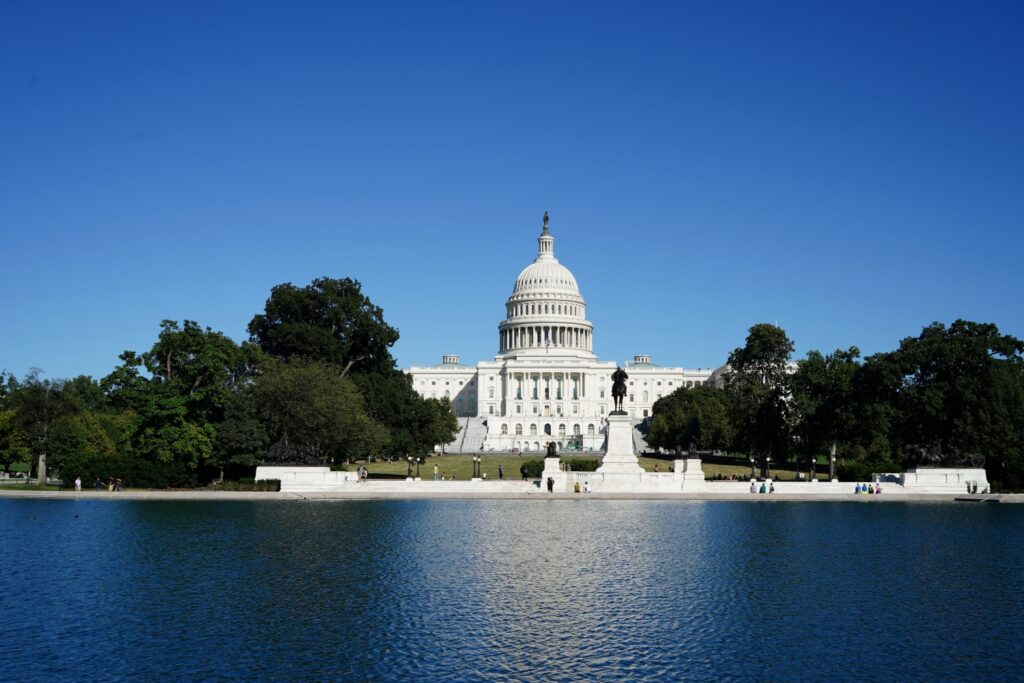Abstract
The global age-friendly movement, launched in 2006 by the World Health Organization, has transformed how communities address aging population needs. In the United States, the AARP Network of Age-Friendly States and Communities (NAFSC) has played a critical role since 2012. This article examines the history and evolution of NAFSC, highlighting growth, community-driven framework, and success in enhancing livability for elders. It explores the age-friendly process, and by examining 12 years of data AARP collected on community action plans, progress reports, and surveys, it emphasizes the importance of local leadership and multisector collaboration in creating inclusive and resilient environments for people of all ages.
Key Words
WHO, age-friendly movement, AARP Network of Age-Friendly States and Communities, age-friendly network, conveners, stakeholders
The age-friendly communities movement has transformed how societies address needs as our population ages, promoting inclusive design, social participation, and access to essential services. In the United States, the effort has gained momentum through public, private, and nonprofit collaboration. Central to this work is the AARP Network of Age-Friendly States and Communities (NAFSC), launched in 2012, now encompassing more than 900 localities. This initiative focuses on creating inclusive, accessible environments for people of all ages.
This article draws on 12 years of AARP data from community action plans, progress reports, and surveys to underscore the critical role of local leadership and multisector collaboration in building inclusive, resilient environments. It traces the history and evolution of NAFSC within the broader age-friendly ecosystem, examining the origins and growth of the movement and the structured process that guides communities as they become age-friendly. Additionally, the article explores the network’s initial adoption and expansion, highlighting the community-driven framework that empowers local leadership to enhance livability for older adults. These initiatives’ accomplishments and impact are notable, translating into real-world benefits for older adults and contributing to the creation of more livable, resilient communities.
The Age-Friendly Communities Movement
The age-friendly communities movement began in 2006 with the World Health Organization’s (WHO) Age-Friendly Cities project, which aimed to address environmental and social factors affecting healthy aging in cities. Based on research and consultations with older adults, WHO identified eight core domains of livability: outdoor spaces and buildings, transportation, housing, social participation, respect and inclusion, civic participation and employment, communication and information, and community support and health services. These domains create a framework for enabling older adults to age in place and engage in community life (WHO, 2007). As adults age, built and social environments become more critical. Studies show that age-friendly communities can promote older adult well-being as policymakers and practitioners develop high-quality, accessible built and social environments (Kim et al., 2022).
The Age-Friendly Cities project laid the foundation for the Global Network for Age-Friendly Cities and Communities, a WHO initiative that supports cities worldwide in adapting to the needs of aging populations (WHO, 2018). In the United States, the movement advanced significantly in 2012 with the launch of NAFSC. As the U.S. affiliate of the WHO network, NAFSC provides resources and guidance to help localities become more age-friendly, fostering collaboration among governments, nonprofits, and stakeholders.
Initially, NAFSC saw modest growth, but as the benefits became evident, the network rapidly expanded. Today, more than 900 communities across 48 states, Puerto Rico, the District of Columbia, and the U.S. Virgin Islands are part of NAFSC (AARP, 2024). This growth highlights the need for communities to support their aging populations by addressing disparities in access to services and opportunities. By focusing on areas like housing, transportation, and outdoor spaces, the network helps communities build environments that promote healthy aging and well-being for older adults.
NAFSC promotes inclusive strategies to ensure all voices are heard during planning, particularly those from historically underserved populations. This commitment to equity extends beyond simply providing access to services; it focuses on ensuring that every community can actively participate in and benefit from the transformation toward more livable, age-friendly environments. Research shows that older adults engage in age-friendly community initiatives in various capacities—as content experts, leaders, advocates, and active implementers (Greenfield & Reyes, 2022). Moreover, conceptual work has illustrated how NAFSC initiatives can foster social connections, improve access to services and resources, and enhance the social influence of older adults (Menec, 2017).
The Age-Friendly Process
Attaining membership in the network is a 5-year process. After member communities apply and are admitted to the network, they are expected to undertake a community-needs assessment. Within 2 years of enrollment, communities complete their Age-Friendly Action Plan. Ideally, the plan includes local context and results of the community assessment. Plans detail action items to enhance community livability across the eight domains of livability, with flexibility allowing communities to incorporate additional domains based on local priorities. These plans include an evaluation strategy, which outlines metrics to track progress on each action item and identifies the community stakeholders responsible for implementation.
The AARP Network of Age-Friendly States and Communities has experienced steady and impressive growth since its inception in 2012.
After completion, the community enters the implementation phase, where it works toward goals outlined in its action plan. The implementation phase culminates with publication of the community’s Age-Friendly Progress Report. Due 5 years after enrollment, that document—which may be structured on the eight domains of livability—discusses progress made toward the goals laid out in the action plan.
Once a community has completed the 5-year process it moves into a second cycle, where it develops a new action plan, enters a new implementation phase, and then develops another progress report.
Initial Adoption and Expansion of the AARP Network of Age-Friendly States and Communities
NAFSC has experienced steady and impressive growth since its inception in 2012. Initially launched with 10 communities—including prominent cities such as New York City, Philadelphia, and smaller ones like Macon Bibb, GA—the network quickly garnered attention for its focus on improving livability for older adults. Since then, the number of communities enrolled has continued to rise, reflecting the growing recognition of the importance of age-friendly planning.
As of 2024, NAFSC includes 913 communities, collectively serving more than 116 million people, including more than 38 million individuals ages 50 and older. The timeline below captures the network’s rapid expansion:

Source for Figure 1: AARP NAFSC Data: Updated Oct. 11, 2024.
This growth reflects the increasing interest in fostering environments where people of all ages can thrive. The network now encompasses communities with diverse demographics, ensuring that cities, towns, and rural areas alike can participate and tailor age-friendly strategies to their unique contexts.
A Community-Driven Framework
While NAFSC is part of a global initiative, it is deeply community-driven. Each member of the network has the flexibility to identify and implement programs and policies that best fit its specific needs. This flexibility allows communities to address local concerns, ensuring that age-friendly interventions resonate with their populations. For example, the needs of a large urban center like Washington, DC, are quite different from those of smaller communities like the Town of Keene, NY (population just over 1,100) or rural regions with aging populations.
The network’s reach into smaller towns and rural areas has been particularly noteworthy. Nearly half (49%) of enrolled communities have populations of fewer than 25,000 residents, indicating that the principles of age-friendly planning are not limited to large metropolitan areas. An additional 16% of the communities have populations between 25,000 and 50,000, while the remaining 35% include mid-sized and large municipalities. This distribution demonstrates that communities of all sizes are invested in and can create built and social environments that support older adults.

Source for Figure 2: AARP NAFSC Data: Updated Oct. 11, 2024.
Moreover, many rural areas and small towns have joined forces through multi-community efforts, with 51 regions representing 36% of the total communities enrolled in NAFSC. These collaborative approaches allow smaller or resource-constrained areas to share resources, align on strategies, and amplify their impact in creating age-friendly environments.
With its vast reach, the network has an unprecedented opportunity to catalyze meaningful change across the United States. Encompassing communities where more than a third of the nation’s population lives—including almost a third of the country’s 50 and older and 65 and older age groups—the network can drive significant, widespread improvements in the quality of life for older adults.
Leadership in Age-Friendly Initiatives
Leadership in the network has evolved since its inception. In the early years, aging services departments were the primary conveners of age-friendly initiatives. However, as the movement has grown, a broader array of leaders and organizations has taken charge of these efforts, reflecting the diverse needs and goals of member communities.
|
Table 1 |
|
|
Who’s Convening Age-Friendly Community Work? |
Percent |
|
Municipality |
47 |
|
Regional Planning Organization: MPO, COG, RPC |
18 |
|
Taskforce/Advisory Council |
12 |
|
Nonprofit |
8 |
|
Senior Center |
5 |
|
Coalition |
4 |
|
Volunteers |
2 |
|
Higher Education |
2 |
|
Others (Funders, Chamber of Commerce, Healthcare) |
<3 |
|
Source for Table 1: AARP NAFSC Data: Updated Oct. 11, 2024. |
|
Today, nearly half (47%) of age-friendly initiatives are led by municipalities, which frequently bring together multiple stakeholders from across local government to ensure a coordinated approach. Regional planning organizations, including Metropolitan Planning Organizations (MPOs), Councils of Governments (COGs), and Regional Planning Commissions (RPCs), lead in 18% of communities, facilitating cross-jurisdictional collaboration and planning. Taskforces or advisory councils convene initiatives in 12% of communities, serving as collaborative bodies that include representatives from a variety of sectors. Nonprofits (8%), senior centers (5%), and coalitions (4%) also play important roles in convening and driving age-friendly work, demonstrating the grassroots and community-driven nature of these efforts.
Other types of conveners, including volunteers (2%), higher education institutions (2%), funders (1%), chambers of commerce (1%), and healthcare organizations (less than 1%), reflect the growing recognition that age-friendly work requires broad, multi-sector collaboration. This diversity in leadership helps ensure that age-friendly initiatives are well-integrated into the broader goals of community development and that they reflect the needs and priorities of all residents.
‘Today, nearly half (47%) of age-friendly initiatives are led by municipalities.’
Additionally, leadership within municipal departments has expanded to include a variety of sectors beyond aging services. While aging services departments continue to lead in 40% of communities, other municipal departments have become increasingly involved in age-friendly initiatives. Elected leaders (17%) now play a critical role, often using their platform to champion age-friendly policies and bring attention to the needs of older residents. Planning departments lead in 12% of communities, ensuring that age-friendly principles are incorporated into broader planning and development efforts. Parks and recreation departments (11%) contribute by designing public spaces that promote physical activity and social engagement, while health and human services (9%) focus on ensuring that older adults have access to vital services. Community outreach (8%), economic development (2%), and housing (less than 1%) departments also play important roles in creating communities that are inclusive and livable for people of all ages.
This broadening of leadership within municipal departments underscores the importance of integrating age-friendly principles across all aspects of community planning. It also reflects the recognition that age-friendly work is not solely the responsibility of aging services, but also requires the commitment of leaders across government and civil society to create meaningful and lasting change. Aging services providers have been integral in developing the age-friendly movement, initially serving as key conveners who brought sectors together to address community needs. As the movement has evolved, aging services providers have transitioned from being sole conveners to vital partners in every community. They continue to offer essential expertise in aging issues, while collaborating with municipalities, nonprofit organizations, and private partners to ensure the movement’s continued success (Keyes et. al, 2022).
Key Partners and the Age-Friendly Ecosystem
Collaboration among organizations is fundamental to promoting age-friendly environments (Teixeira-Poit, 2019). A review of 322 unique action plans submitted by communities reveals that, on average, each community works with 27 partners. Municipal governments play a central role in age-friendly efforts, with 80% of respondents reporting strong support from local officials—consistent with findings from Black and Oh (2023). These partnerships extend beyond aging services departments to include a diverse range of municipal and ecosystem sectors.

Source for Figure 3: Annual AARP NAFSC Members Survey, 2024 (unpublished)
Preliminary data from the 2024 Annual AARP NAFSC Members Survey highlight the critical role of partnerships across the age-friendly ecosystem. When asked, “Which of the following are key partners in your age-friendly work?” respondents identified several sectors that reflect the broad reach and inclusivity of their initiatives. Aging services led as a key partner, with 67% of respondents citing them as collaborators in 2024, up from 57% in 2021. Public health organizations were also prominently involved, with engagement rising from 42% in 2021 to 44% in 2024. Healthcare maintained consistent partnership levels, while business and higher education sectors experienced notable growth in their involvement.
|
Table 2 |
|
|
Reported Frequency of Partner Engagement Across Ecosystem Sectors |
Percent |
|
Engaged partners from one sector |
24.6 |
|
Engaged partners from two sectors |
21.5 |
|
Engaged partners from 3 or more sectors |
50.8 |
|
Did not answer the question |
3.1 |
|
Source for Table 2: Annual AARP NAFSC Members Survey, 2024 (unpublished) |
|
The survey reveals the diversity of sectors that communities engage in their age-friendly efforts. More than half of the respondents (50.8%) reported working with partners from three or more sectors, indicating a multi-sector approach that enhances the community’s capacity to address aging-related challenges in a comprehensive way. Another 21.5% partnered with two sectors, while 24.6% engaged a single sector, suggesting that some communities are still in the early stages of building broader collaborations. Only 3.1% of respondents did not specify their partnership involvement. These findings underscore the flexibility and inclusivity of the age-friendly ecosystem. Communities are increasingly drawing from a variety of sectors, aligning their resources and expertise to create more resilient, inclusive environments that support the well-being of older adults and enhance overall community livability.
Accomplishments and Impact of Age-Friendly Initiatives
The network continues to foster local innovation, collaboration, and positive change for older adults and communities across the country. Insights from the 2023 Annual Age-Friendly Community Leadership Survey (Oh and Wihry, 2023) illustrate the significant impact age-friendly initiatives have had on municipal policies, partnerships, and community engagement. The survey, drawing from the experiences of member communities, paints a vivid picture of how the network has catalyzed change and overcome barriers to improve livability for people of all ages.
Catalyzing Local Policy Change
One of the most notable accomplishments of the network is its ability to spark meaningful policy changes at the local level. In 2023, nearly half (48%) of participating communities reported successfully advocating for changes in municipal or organizational policies as a direct result of their age-friendly initiatives. These changes span various sectors, from public transportation and housing to public health and accessibility improvements. The success of these efforts highlights the effectiveness of age-friendly planning in promoting actionable change.
Local policy shifts are a core goal of age-friendly work, as they create long-term sustainability for community improvements. For example, municipalities have adopted policies to make public spaces more accessible, increase housing options for older adults, and improve pedestrian safety. These policy changes ensure communities are better equipped to support their older populations in a proactive, inclusive manner. The fact that nearly half the surveyed communities reported these changes underscores the far-reaching influence of age-friendly initiatives on municipal governance.
Overcoming Barriers Through the NAFSC Framework
NAFSC’s structured 5-year program cycle and framework have set communities up for success by providing a clear roadmap for implementing age-friendly principles. According to the 2023 survey, an overwhelming 96% of respondents indicated that the framework helped them overcome barriers to improving their community for older residents.
Between 2021 and 2023, communities reported significant progress in overcoming key challenges, as shown in the Figure below.

Source for Figure 4: Chartbook From the Annual AARP NAFSC Members Survey, 2023
These statistics reflect the progress communities are making across multiple dimensions, including encouraging a positive view of aging and fostering collaboration with the private sector. The increase in services coordination, rising from 61% in 2021 to 83% in 2023, demonstrates how communities are working together to align public and private resources, enabling more efficient and effective service delivery for older adults. Additionally, studies suggest that a greater availability of age-friendly features influences older adults’ perceptions of their community, fostering a sense of belonging and agency and strengthening their desire to age in place (Choi, 2022).
Embedding Age-Friendly Principles in Long-Term Community Planning
As communities across the United States increasingly recognize the value of becoming age-friendly, they are embedding an age-friendly lens into broader long-term planning efforts. Through their participation in the network, members are integrating age-friendly principles into a variety of strategic plans—transforming local policy, shaping development projects, and ensuring that aging is considered in every aspect of community life (Coyle et al., 2022). This age-friendly ecosystem approach not only makes communities more livable for older adults but also strengthens their overall resilience, inclusivity, and vibrancy.
|
Table 3 |
|
|
Municipal Plans Integrating Age-Friendly Lens |
|
|
Respect and Social Inclusion Comprehensive plan (76%) |
Communication and Information Digital/broadband (10%) |
|
Public Spaces Parks and trails (12%) |
Community and Health Services Disaster resilience/mitigation (43%) Climate/energy (30%) |
|
Transportation Transit/public transportation (45%) Bike/pedestrian/walk (51%) |
Civic Engagement and Work Economic development (45%) Community business plan (13%) |
|
Housing Land use, planning, zoning (44%) |
None (4%) |
|
Chartbook From the Annual AARP NAFSC Members Survey, 2023 |
|
Incorporating age-friendly principles into comprehensive plans is becoming a more common strategy for embedding aging considerations into long-term planning. At least 76% of communities report that their age-friendly work is directly aligned with their comprehensive plan, positioning aging as a cross-cutting issue that influences a broad range of policy decisions. This integration ensures that aging is not siloed but is part of the community’s broader vision for growth and development. By embedding age-friendly principles in comprehensive plans, communities are fostering a culture that prioritizes aging at every level of decision-making, ensuring that older adults remain central to conversations about the future.
Age-friendly communities are influencing land use, planning, and zoning, with 44% incorporating age-friendly principles into policies. This has led to more walkable neighborhoods, accessible public spaces, and housing options that support aging in place. Beyond planning, 12% of communities have enhanced parks and trails for older adults, 45% have applied age-friendly principles to public transportation, and 51% to bike and pedestrian infrastructure, promoting mobility. Additionally, 10% of communities have expanded broadband access, 43% have included age-friendly principles in disaster resilience plans, and 30% in climate initiatives. Age-friendly strategies also are shaping economic development in 45% of communities, with 13% integrating these goals into business plans, acknowledging older adults’ contributions to the economy.
By embedding age-friendly principles into long-term planning, communities are fostering a cultural shift that includes aging across all conversations and plans. This transformation makes aging a core consideration in areas such as transportation, housing, public spaces, and disaster preparedness—ultimately creating more inclusive, resilient communities where people of all ages can thrive.
Conclusion
NAFSC continues to be the foundation of the age-friendly movement in the United States, catalyzing progress, advancing change in built and social environments, and fostering multisector partnerships. Via the network’s efforts, communities have the tools they need to design and implement inclusive, forward-thinking solutions for residents of all ages. The network embodies a powerful promise: to create communities where people can live, work, and thrive at every stage of life. NAFSC plays a crucial role by uniting diverse sectors, driving innovative solutions, and reshaping communities to address current needs, while preparing for future challenges.
The network provides considerable value by equipping communities with a comprehensive framework and support system that enables them to implement adaptable, inclusive solutions, ensuring the well-being and active participation of residents across all age groups. As the movement continues to grow, age-friendly communities are redefining what it means to support an aging society, ensuring that every individual, regardless of background or age, has the opportunity to age well in a truly livable community.
Bill Armbruster is a senior advisor and manages the AARP Network of Age-Friendly States and Communities, a program within AARP Livable Communities; he may be contacted at warmbruster@aarp.org. Dalan Hwang, is a consultant with the AARP Network of Age-Friendly States and Communities.
Photo credit: Shutterstock/Maria Sinisterra
References
AARP. (n.d.). AARP livable communities map. https://livablemap.aarp.org/#/view=map
Black, K., & Oh, P. (2023). Exploring sectoral reach in age-friendly communities. The Gerontologist, 63(5), 920-932. https://doi.org/10.1093/geront/gnac149
Choi, Y. J. (2022). Understanding aging in place: Home and community features, perceived age-friendliness of community, and intention toward aging in place. The Gerontologist, 62(1), 46-55.
Coyle, C. E., Gleason, S. R., & Mutchler, J. E. (2022). Spillover benefits and achieving sustainability of age-friendly communities. The Gerontologist 62(1), 29-35. https://doi.org/10.1093/geront/gnab060
Greenfield, E. A., & Reyes, L. (2022). Characterizing older adults’ engagement in age-friendly community initiatives: Perspectives from core group leaders in the Northeast United States of America. Ageing and Society, 42(6), 1465-1484. https://doi.org/10.1017/S0144686X2000166X
Keyes, L., Collins, B., Tao, J., & Tiwari, C. (2022). Partnerships and multisectoral collaboration: Aligning policy, place, and public value—Planning age-friendly cities in municipal organizations. Journal of Housing For the Elderly, 36(3), 237-253. https://doi.org/10.1080/02763893.2022.2061364
Kim, K., Buckley, T. D., Burnette, D., Huang, J., & Kim, S. (2022). Age-friendly communities and older adults’ health in the United States. International Journal of Environmental Research and Public Health, 19(15). https://doi.org/10.3390/ijerph19159487
Menec, V. H. (2017). Conceptualizing social connectivity in the context of age-friendly communities. Journal of Housing For the Elderly, 31(2), 99-116. https://doi.org/10.1080/02763893.2017.1309926
Oh, P., & Wihry, D. (2023). Data overview from the annual AARP NAFSC member survey (unpublished chartbook developed by University of Maine Center on Aging for AARP). AARP Livable Communities.
Teixeira-Poit, S. M. (2019). Examining collaboration across organizations in an age-friendly community. Journal of Women & Aging, 32(1), 91-113. https://doi.org/10.1080/08952841.2019.1685857
World Health Organization. (2007). Global age-friendly cities: A guide. https://www.who.int/ageing/publications/Global_age_friendly_cities_Guide_English.pdf
World Health Organization. (2018). The Global Network of Age-Friendly Cities and Communities: Looking back over the last decade, looking forward to the next. https://www.who.int/ageing/gnafcc-report-2018.pdf













